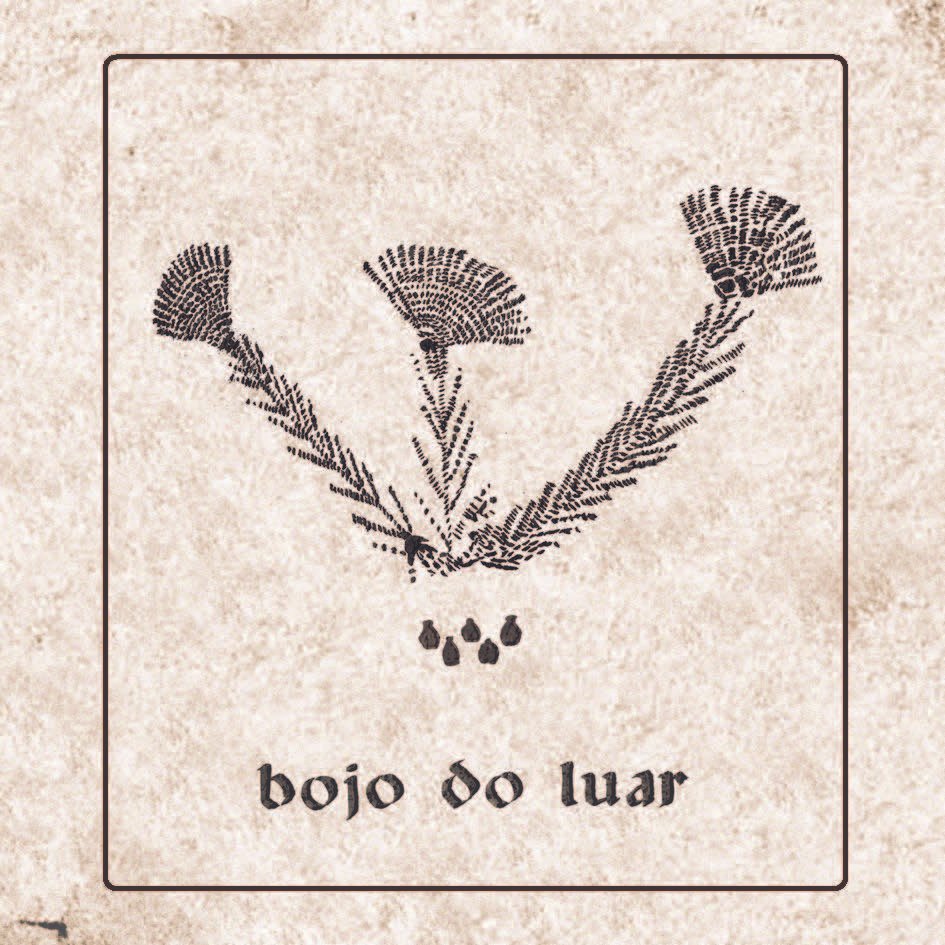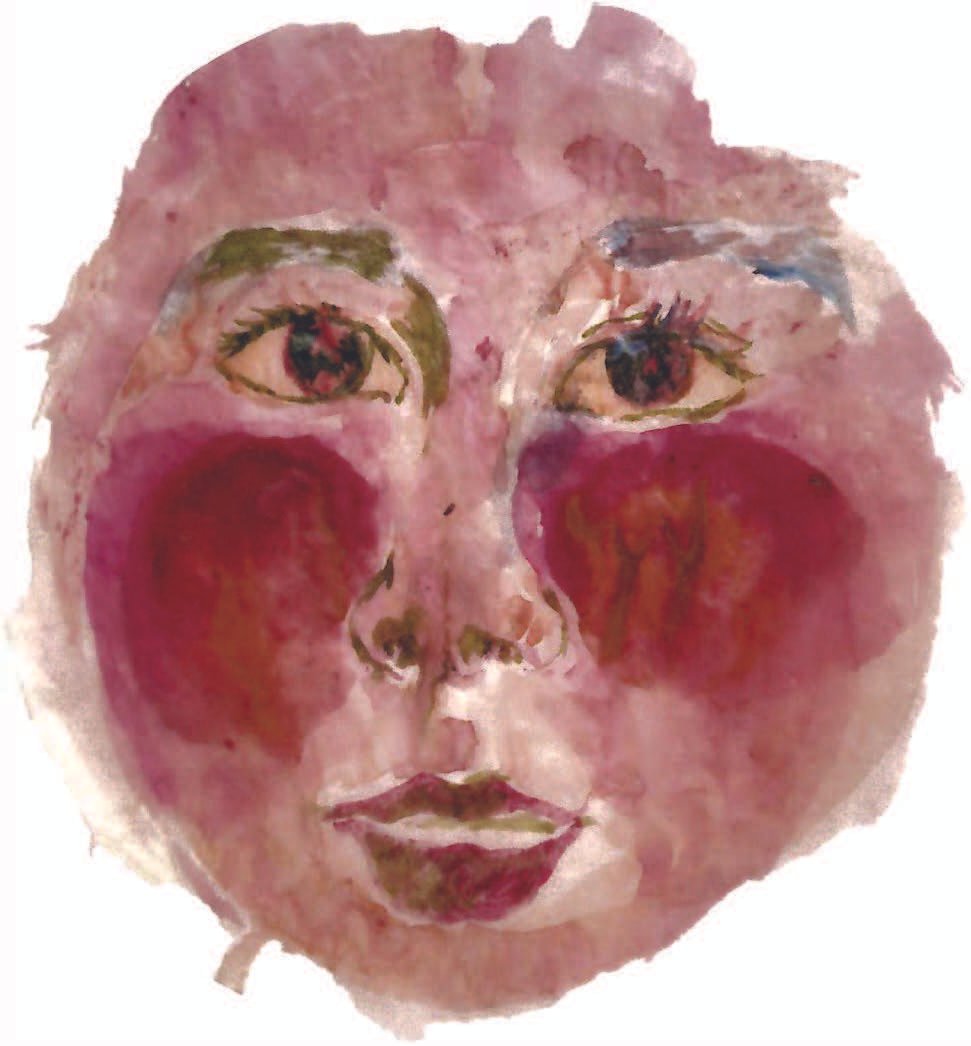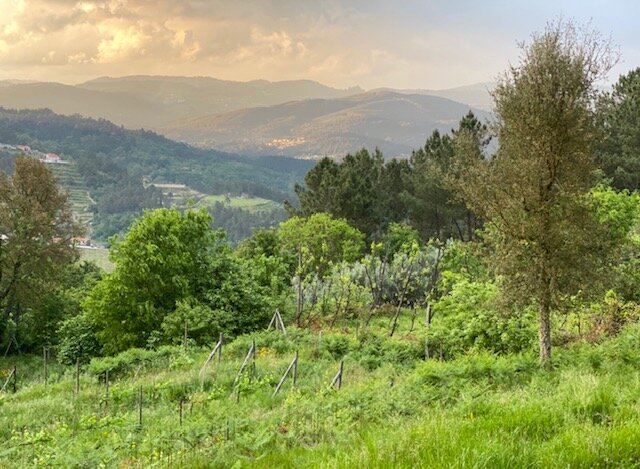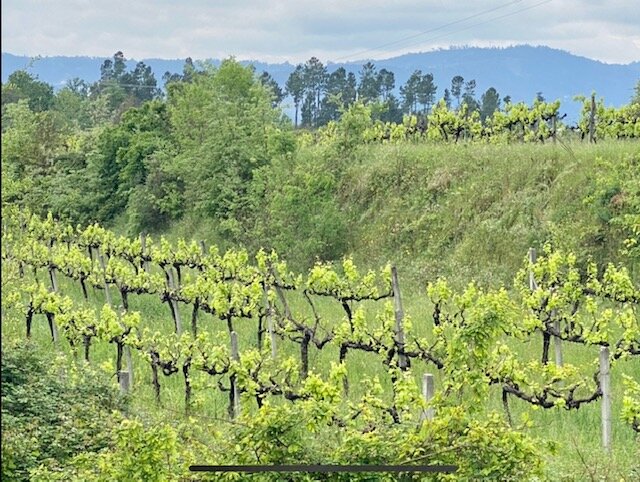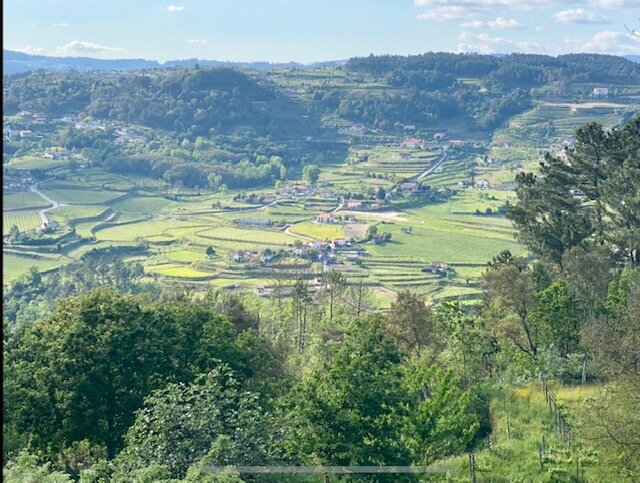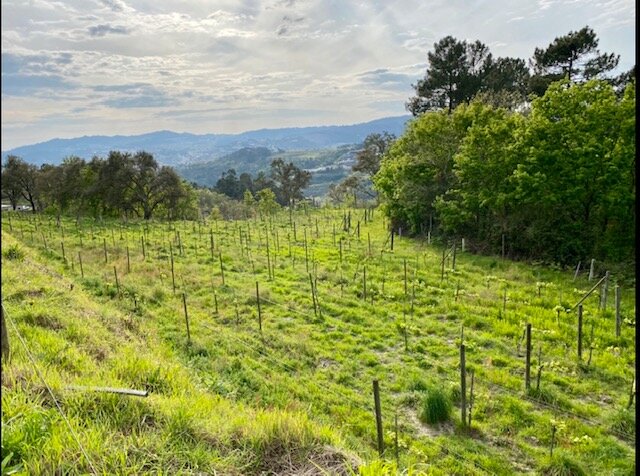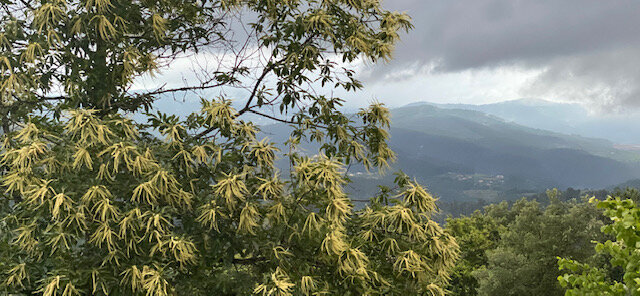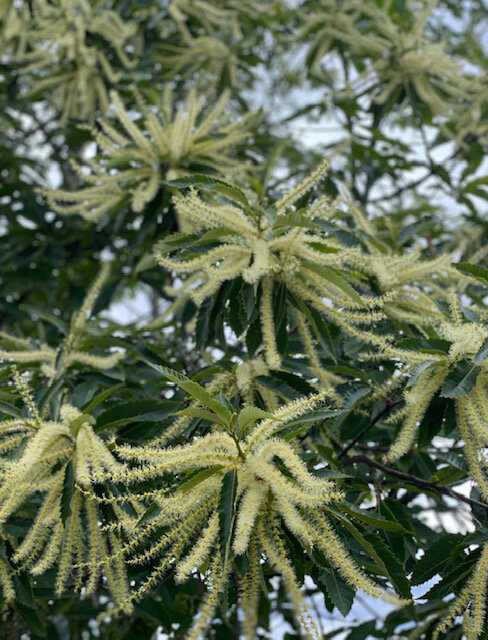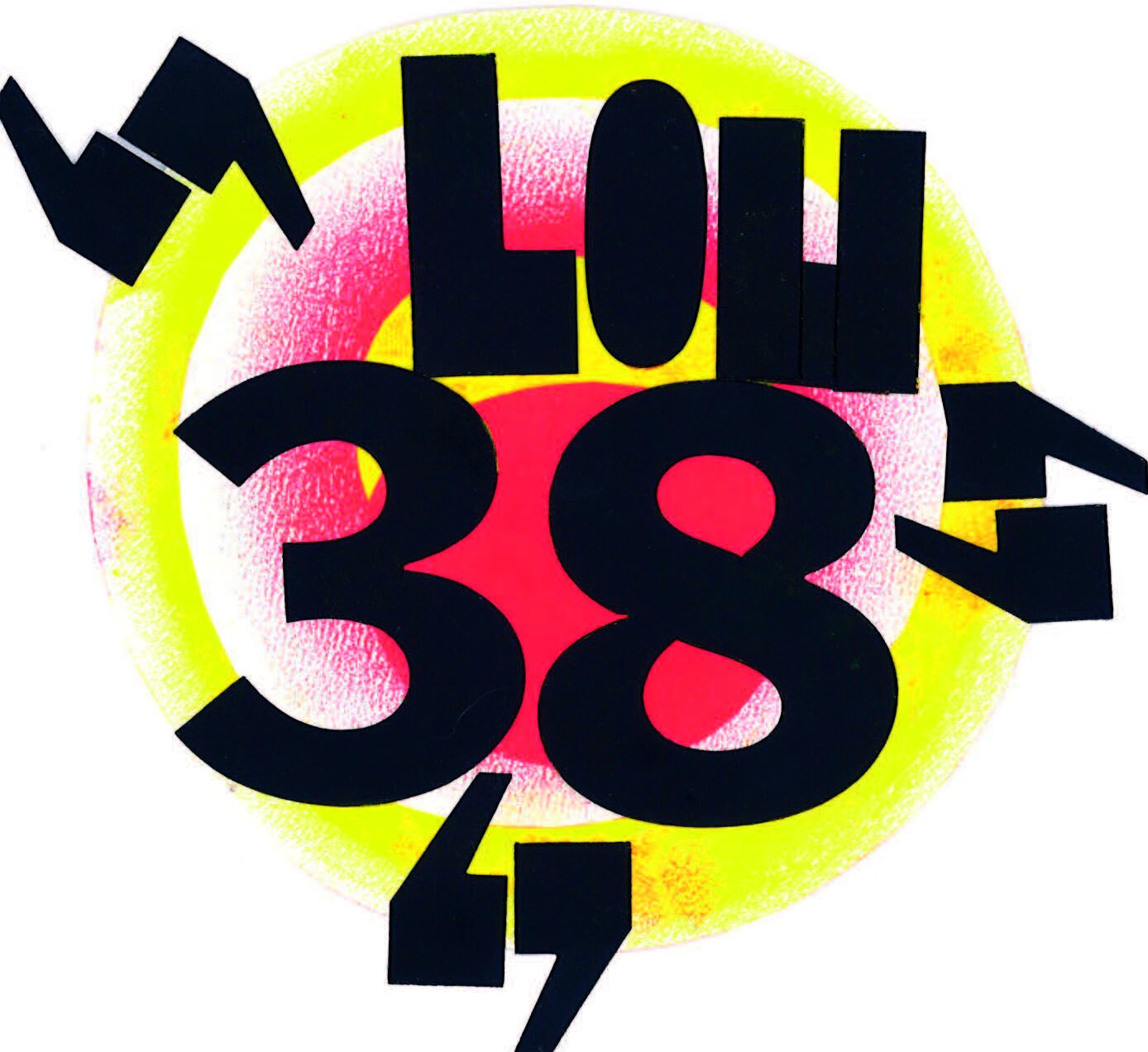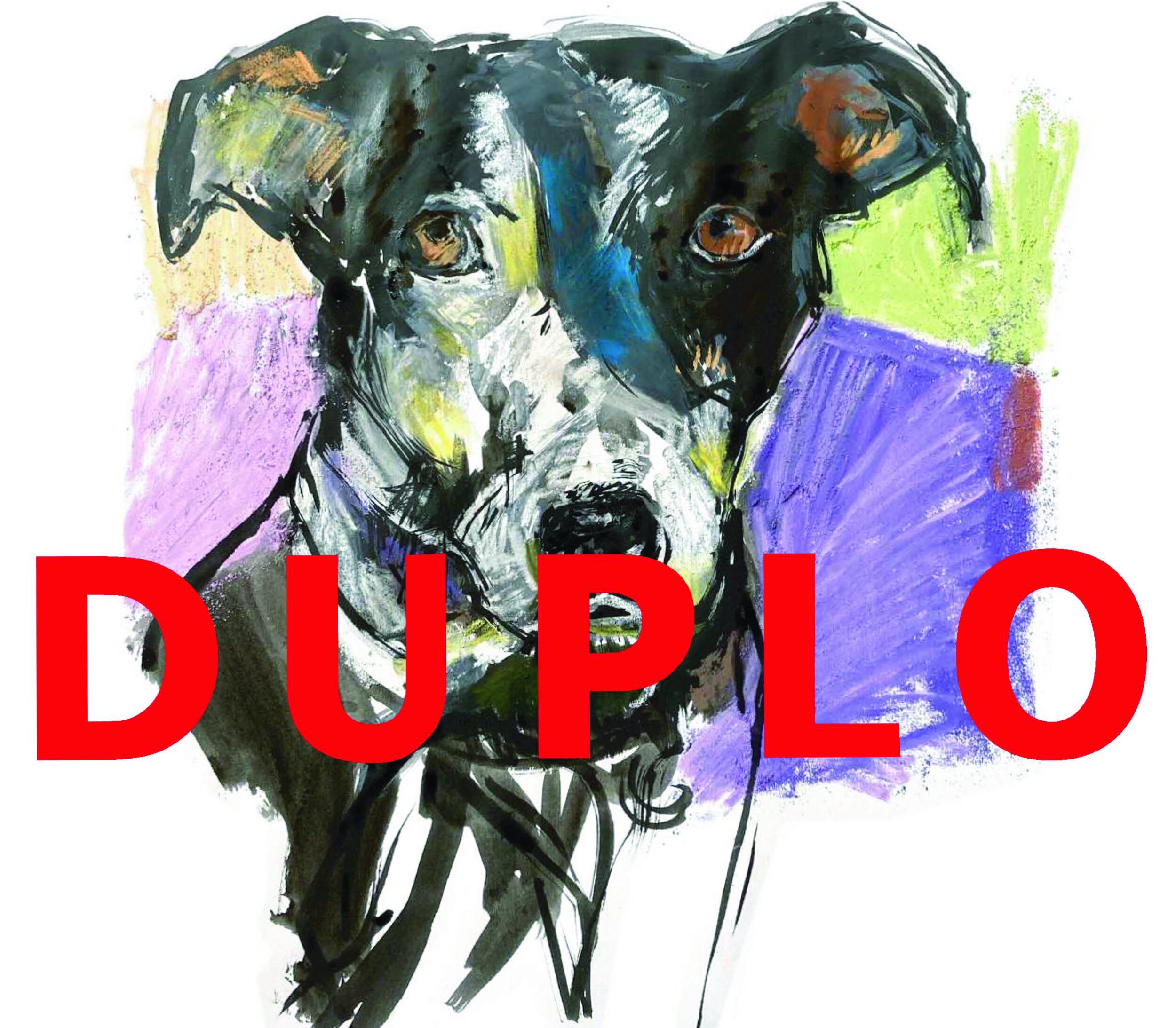Bojo do Luar
(Vinho Verde, Portugal)
The Bojo do Luar project came to life during a trip Savio made to the Vinho Verde region. Here he met Fernando Paiva, a biodynamic producer who has been experimenting with adding ground chestnut flowers to the grapes and must before fermentation began. Meanwhile he’s halted using SO2 altogether since 2017.
Savio was undeterred and saw this as an opportunity: to use the traditional autochthonous varietals of Northern Portugal, with natural high levels of acidity, and apply his knowledge and experience of many decades working with French producers. Together with two local young men, with experience and knowledge of regional viticulture, who were open to experiment new methods in the vineyard and cellar, the Bojo do Luar project started to take shape. The soils started to be fertilized with self-made organic compost, blended with chicken and cow’s manure. In the middle of the rows, a variety of beneficial herbs, recommended by Mr. Paiva, were sewn to further enrich the soils at the beginning of springtime and autumn. To manage plagues, only SO2 and cooper were sprayed.
Using a non-intervention approach in the cellar, which Savio likes to call: “monastic winemaking”, the Bojo do Luar wines started to take shape. The region has a mostly cool temperate climate throughout Spring, then very warm days, and cool nights until the harvest at the end of September. Five red grape varietals and five whites were chosen.
The parcels are located near the Tâmega river, in the foothills of the Serra do Marão mountain range, in the southeastern corner of the Vinho Verde region, with deep granitic soils and south-south-western exposure.
Upon arriving at the cellar, each grape varietal is destemmed and moved with a small percentage of whole cluster to large century-old “talhas” (amphoras), acquired from an old inactive winery in the Serra de São Mamede region bordering Spain to the East.
As stabilizer, 500g of ground chestnut-flower is added per each ton of grape before the fermentation starts naturally and a gentle punch-down is done twice a day to keep the cap soaked.
The time the wine remains with pellicular maceration in the amphoras, once the fermentation is finished, varies according to grape varietal and vintage profile.
There is a minimal intervention throughout the entire process in the cellar. Once the blend for each wine was defined, 25mg/l of SO2 is added at bottling.
